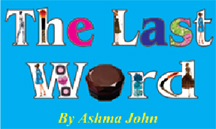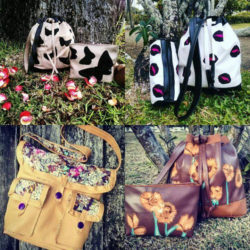Twenty that is the number of prom dresses that 22-year-old Naomi Murray designed for a single prom during the busy prom season. This is an astonishing figure for any local designer considering the amount of options available to the consumer.

AJ: Why did you choose fashion over becoming a paediatrician?
NM: While I attended sixth form, I discovered I had a very strong interest in fashion. It wasn’t that I wasn’t good at school but I think it’s wiser to follow something that you are truly passionate about. While I was good at both, fashion brought me more personal satisfaction.
AJ: What was the biggest setback in shuffling your main goals?

NM: I would say one of my biggest setbacks came when it was time to tell everyone I was switching career paths. Convincing friends and family that this is a feasible career move was difficult. Careers in medicine, law and so on are idolized and privileged careers. It was challenging to convince people close to me that even though there is a non-existent fashion industry here, I could make something out of it.
AJ: Support for local designers is an extremely seasonal thing; for example during prom period. How are you sustaining yourself with just occasional demand?
NM: I think what makes my brand unique is the fact that I started out doing accessories and bags. These are areas that many local brands don’t focus on. I didn’t stifle myself into one particular range as this can potentially affect business. It is important to think of the consumer if you want a continuous flow of sales throughout the year. My way of doing that was widening my product range.
AJ: Most designers are self-taught, including yourself. Would you say this is enough to compete and if not what would you like to see change?
NM: I definitely don’t think it is sufficient to be self-taught if you want to survive in fashion. I think like any other career, fashion is very deserving of you going all the way in terms of trying to master the art. It is an industry like any other.
AJ: What would you like to see change in Guyana in terms of support for the arts though?


NM: I think the government needs to invest more in it. I personally believe it favours science and social educational platforms a bit more. I think it would fair and worthwhile for students within the arts to have the same opportunities as those within the science and social streams. There is more opportunity for those students as opposed to someone who wants to be in the arts. There are more study opportunities especially. I think that there is a certain level of respect given freely within our society when you choose those fields. Stakeholders have to start by recognizing that this is a field too that has great potential once you are taught on how to maximize that potential. This is what we need to work towards, enlightening them about its potential.
AJ: As a young entrepreneur what are some of the things you are working on in terms of developing the brand? For example funding?
NM: My brand is independent and the only investor is myself. While it is difficult, it is rewarding to learn and grow independently. I think there needs to be more variety in terms of ethnicity of my models and more accommodation for plus-sized women. These are just a few things that I am working on at the moment, in order to make the most of the business’s potential.
It is hard to ignore the fact the arts will see no significant growth until government and key stakeholders recognize that it can transform itself into a viable industry. This recognition needs to be holistic and come from both sides also. Now more than ever I feel that there is so much stigma attached to being involved in the arts and there is valid proof that those involved feel some of amount of partisan investment and lack of attention when it come to the government’s support. While Naomi Murray is enthusiastic about her brand, she too recognizes that the enthusiasm and that reality that she is self-taught aren’t enough for growth. The culture that being in involved in the arts has adapted is one that relates to hobby traits as opposed to industry viable traits. For development to happen, strategic lobbying needs to take place. The core issue is that there is lack of recognition of the value of the arts and there is not much support in terms of investment. In addition to this, the available support can’t be matched to the support shown and given for other sectors. The inequality needs to be addressed. A simple tour of the now dreadful-looking Burrowes School of Arts would offer perspective. Those in the arts must first recognize their worth to bring about that change, in my opinion, and in addition to this, they must also pressure those responsible to aid in facilitating the change.
https://twitter.com/theonlinerunway
http://instagram.com/theonlinerunway





